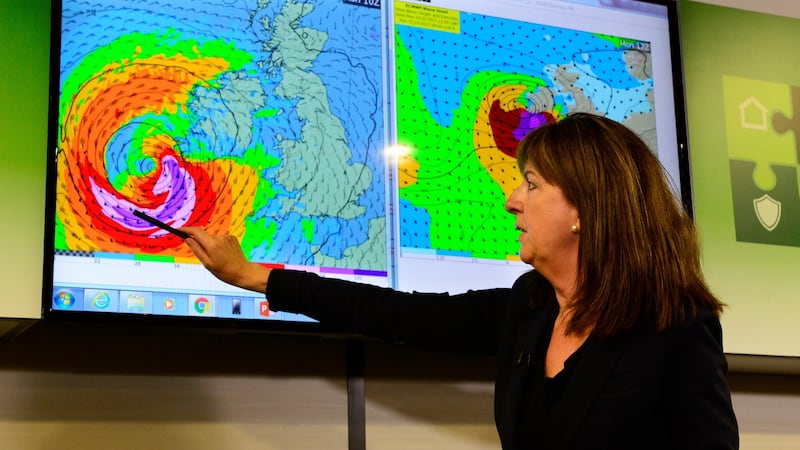Last year was marked by mild, dull and wet weather which was interrupted by the "violent and destructive" Storm Ophelia in October 2017, according to the Met Éireann annual climate report.
Three people were killed and hundreds of thousands of homes were left without power after the extra-tropical cyclone made landfall in mid October bringing violent storm force winds to Munster and strong gale force winds to many other areas around the country.
The storm brought the strongest gusts and wind speed on record with speeds at Roche’s Point in Co Cork reaching 114.8 km/h and gusts of 155.6 km/h.
The annual forecaster’s report, which provides an overview of Ireland’s weather during 2017, shows temperatures were higher than usual last year but that conditions were often dull and wet.
The first half of 2017 was milder than normal while the second half experienced below normal temperatures. The warmest weather was recorded in June with temperatures peaking at 28.6 degrees Celsius in Dublin's Phoenix Park on June 21st.
The coldest air temperature was recorded on December 11th at Casement Aerodrome in Co Dublin and Horseleap in Co Offaly where temperatures dropped to -6.6 degrees. The lowest grass minimum was reported at Straide, Co Mayo on January 21st where temperatures dropped to -11.3 degrees Celsius.
Sunshine levels were below average with the highest number of daily sunshine hours recorded at Johnstown Castle in Co Wexford and Cork Airport on June 18th with 15.9 hours of sun. The number of dull days ranged from 90 days at Straide, Co Mayo to 132 days at Knock Airport.
The first half of 2017 was drier than normal while the second half brought more rain than usual. April was the driest month of the year and the wettest conditions were recorded in September. The highest annual rainfall was recorded at Cloone Lake in Co Kerry and the lowest annual rainfall was reported in Ringsend in Dublin.

Storm Doris
January was mainly dry and settled with high pressure throughout the month while February was mild and drier than normal in some parts of the country. The arrival of Storm Doris in the latter part of the month brought widespread gales disruption on February 23rd.
March was mild and wet in most places with generally unsettled and changeable conditions. Higher than usual sunshine hours made it the sunniest March in seven years at Knock Airport which reported a monthly total of 112.9 hours.
April was described as “exceptionally dry” and brought the dullest weather for the month to Shannon airport in 24 years. Temperatures dropped later in the month bringing showers and some night frosts.
May brought a lot of dry, calm and sunny weather with intermittent rain and wind throughout the month. Early June was marked by rain and showers, however the spread of high pressure from the Azores brought warm weather and sunshine during the third week of the month.

July and August were “noticeably cool” and “dull” although a brief period of high pressure brought warm weather on some days. Heavy, thundery rain in the third week of August resulted in localised flooding disruptions.
The arrival of Storm Aileen in September brought strong winds on coastal areas on September 12th followed by a build of high pressure and dry, bright weather. Storm Ophelia hit the country on October 16th and was followed by storm Brian which brought downpours and caused coastal flooding in Limerick and spot flooding in Cork.
The unsettled weather continued into November and December with some cooler interludes bringing severe frosts and widespread snowfall in many parts on December 10th. Storm Dylan brought strong winds towards the end of the month as it made its way across northwest Ireland.














